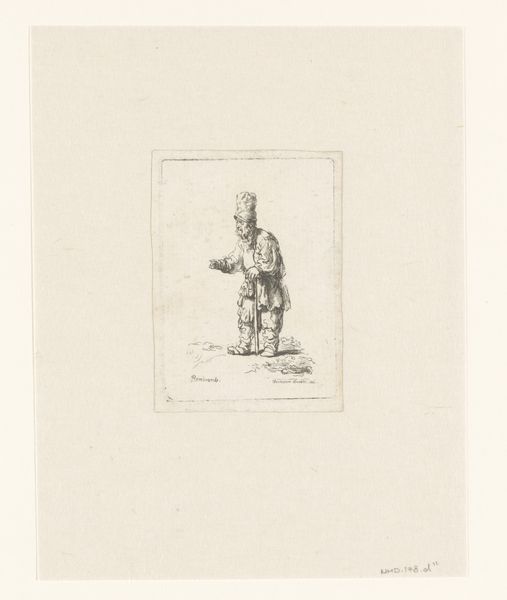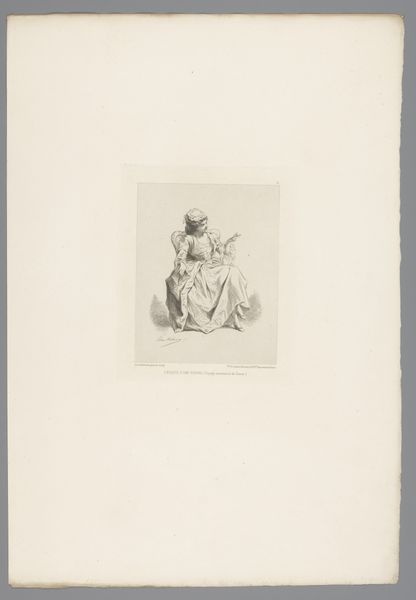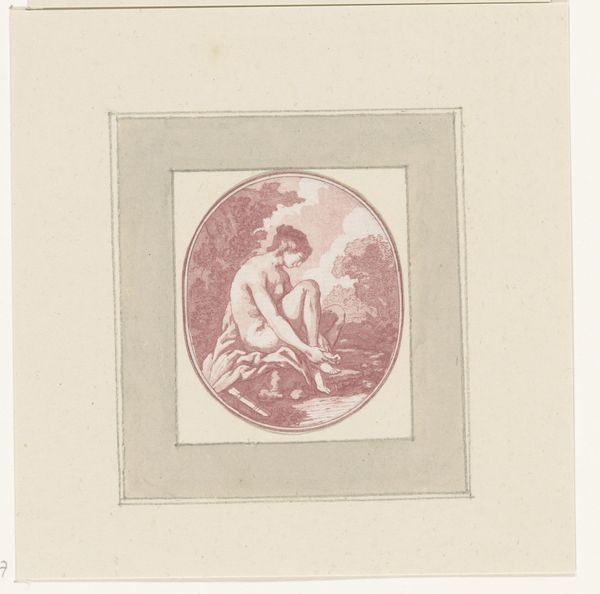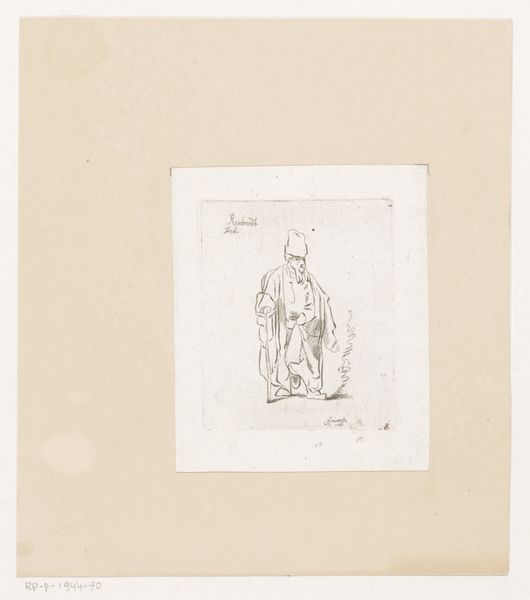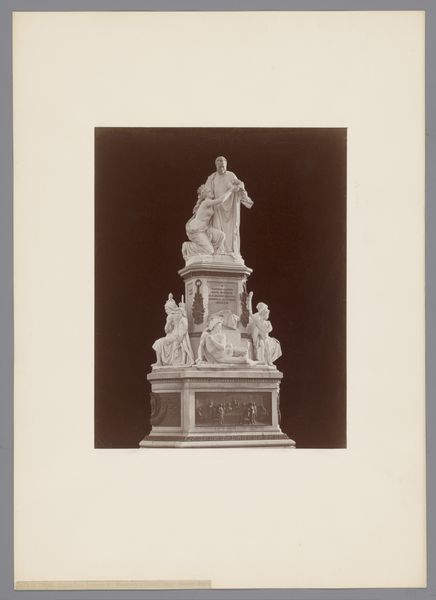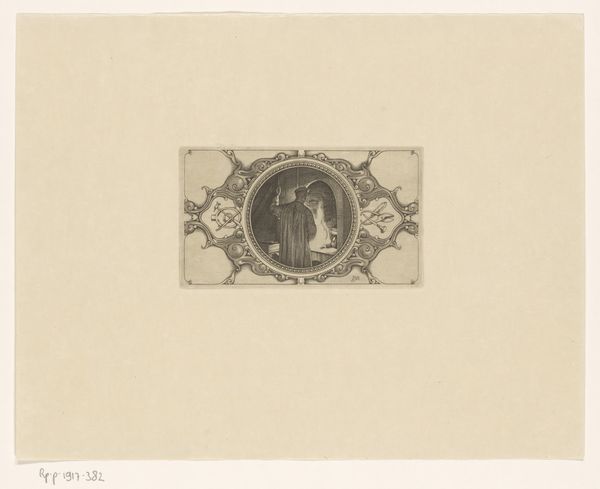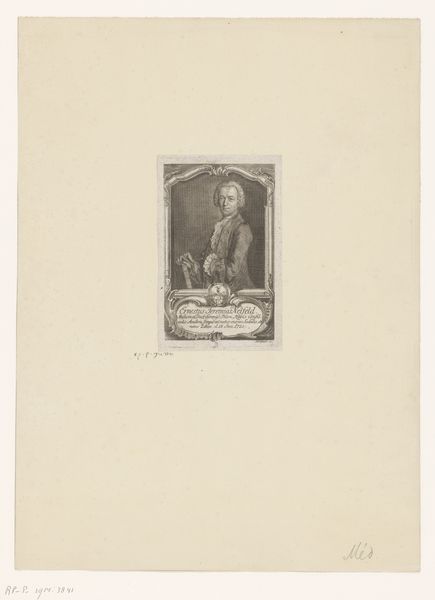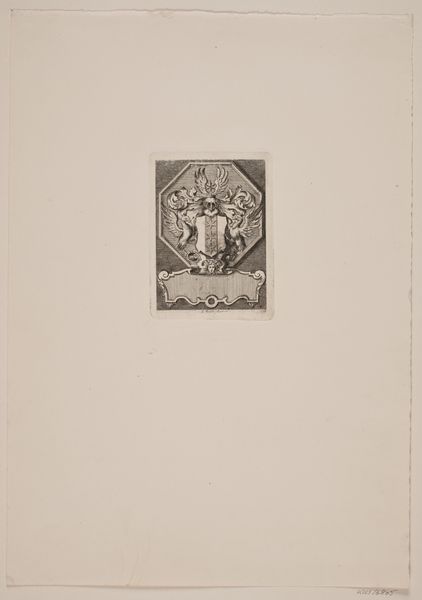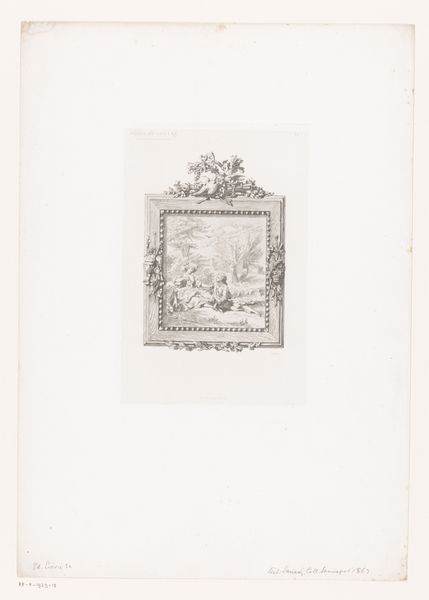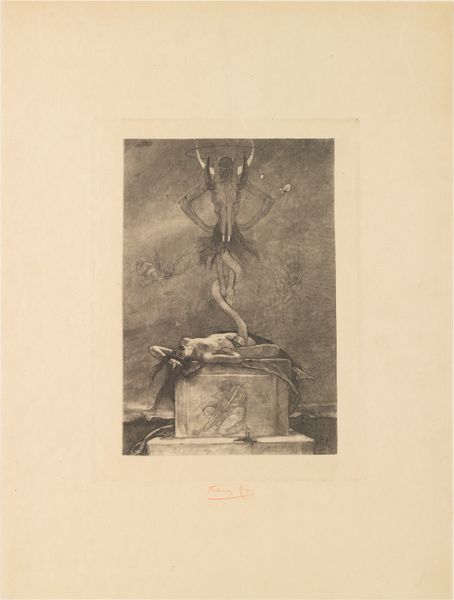
Dimensions: height 124 mm, width 74 mm
Copyright: Rijks Museum: Open Domain
Curator: Well, this strikes me as profoundly melancholy. Look at this bust – “Buste van Anton von Störck”, as it’s known – seemingly hovering there in the engraving. Like a ghost of Enlightenment ideals. Editor: Indeed. It’s an engraving, dating sometime between 1749 and 1796, rendering a sculpted bust. We need to think about the process. The original sculpture, assuming it existed as such, required mining, transportation, the sculptor's labor, the social structures supporting patronage. All condensed through engraving into a replicable print. Curator: See, and I think about the quiet dignity of it. Störck gazing placidly—was he truly that serene or did he choose a pose? The artist, Johann Ernst Mansfeld, saw fit to immortalize, using print and sculpture as one! The bust is there to say, “I matter. Remember me.” Editor: But the means! Consider the act of engraving. The engraver's painstaking labor, mediated by tools and technique, transforming the three-dimensional object into a series of lines and values. It’s a commentary on labor as a transformative act, obscuring the original source of wealth. Curator: Obscuring, perhaps. Or amplifying, transforming stone to whisper light and shadow through ink. Consider the emotional translation from marble to paper, a material progression but also deeply a metamorphosis! Don't you feel his quiet gaze? Editor: A gaze meticulously constructed! From quarry to printing press, so many hands shaped that gaze. We lose sight of those producers when we focus solely on Störck’s serene visage. The material speaks as loudly, perhaps even louder than the intended portrait itself. Curator: Well, the "loudness" debate shall always continue! I see his face and I imagine what mattered most: ideas, feelings, moments of illumination. This is captured for everyone. It is, in effect, to remember! Editor: And I consider the cost—literal and social. The raw materials, the artist’s time, the consumer's disposable income all woven together. Curator: Perhaps it is about remembering what different forms the artistic message, or portrait, comes to carry in itself. What an odd piece to remind one that there’s more than meets the eye! Editor: It reminds me that art isn’t born in a vacuum. Every line speaks of material reality as loudly as it speaks of Störck's placid self-regard.
Comments
No comments
Be the first to comment and join the conversation on the ultimate creative platform.
